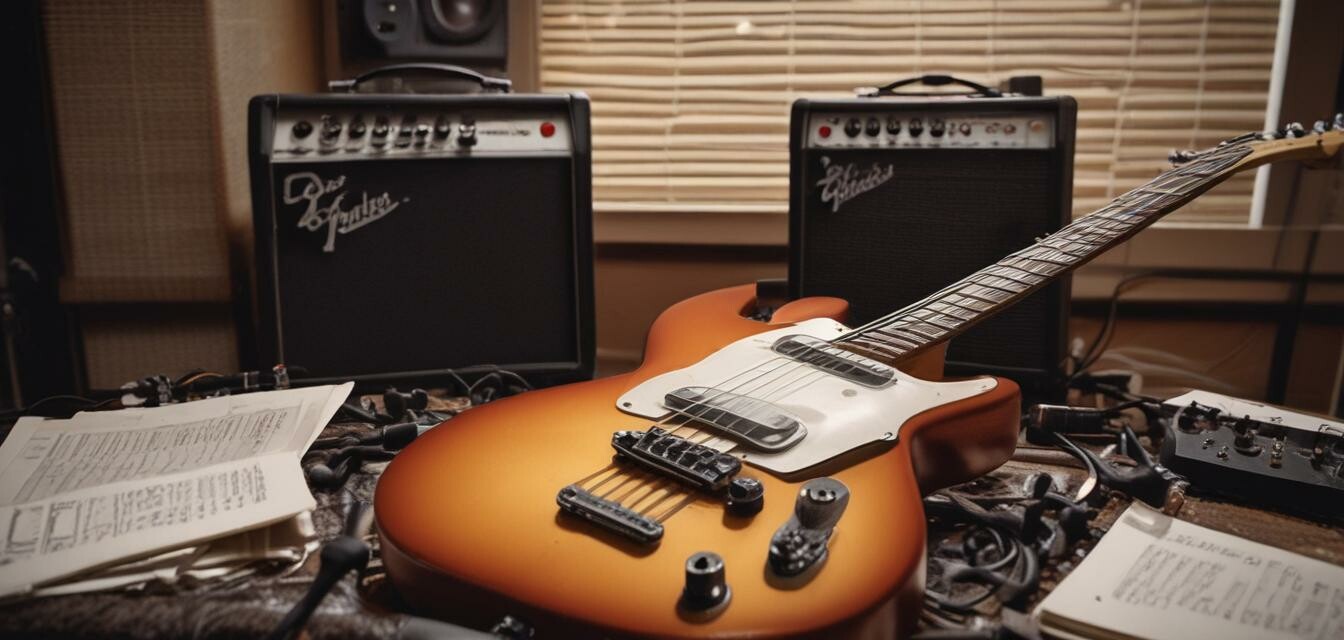
Tips for recording with your Fender guitar
Key Takeaways
- Microphone placement is crucial for capturing the best sound.
- Experiment with different recording software to find what works for you.
- Use quality cables and interfaces for better audio fidelity.
- Experiment with different guitar effects to enhance your recordings.
- Regular maintenance of your guitar leads to better sound quality when recording.
Recording your Fender guitar can be an exhilarating experience, letting you capture the essence of your musical creativity. However, to achieve professional-sounding recordings, there are several best practices to keep in mind. In this article, we will discuss effective microphone placements, software suggestions, and other tips to help you record high-quality audio with your Fender guitar.
Understanding Microphone Placement
The way you position your microphone can drastically affect the quality of your recording. Here are some key points to consider:
| Microphone Type | Placement Tips |
|---|---|
| Dynamic Microphones | Place 1-2 feet away from the amplifier facing the speaker cone. |
| Condenser Microphones | Position close to the guitar body for acoustic guitars, about 1-2 inches away. |
| Ribbon Microphones | Set up about 12 inches away, angled towards the speaker for a warmer tone. |
Understanding how different microphone types respond to sound will help you mix recordings more effectively and capture your Fender guitar's true character.
Experimenting with Placement
Sometimes the best sound comes from unexpected places. Here are some popular microphone placements to experiment with:
- Close-miking the amp.
- Using a room mic for ambient sound.
- Placing a mic beneath the guitar for a unique tonal blend.
Choosing the Right Recording Software
Picking the right Digital Audio Workstation (DAW) can impact your workflow and output. Consider these popular options:
| Software | Platforms | Best For |
|---|---|---|
| Pro Tools | Windows, Mac | Professional studio applications. |
| GarageBand | Mac | Beginners looking for intuitive software. |
| Reaper | Windows, Mac, Linux | Budget-friendly yet powerful DAW. |
| Ableton Live | Windows, Mac | Live performances and music production. |
Each of these programs offers unique features, so choose one that fits your recording style and needs. Explore more in our buying guides section!
Connection Basics
Using the right cables and interfaces ensures a clean signal getting to your computer. Here are some vital tips:
- Use high-quality audio interfaces for better sound conversion.
- Choose low-capacitance cables to maintain signal integrity.
- Consider using direct input (DI) boxes for a cleaner guitar sound.
Enhancements through Effects
Adding effects can change the entire character of your recordings. Here's how to enhance your Fender guitar's sound:
- Start with basic effects like distortion or overdrive.
- Try modulation effects, such as chorus or flanger, for depth.
- Finally, incorporate reverb and delay to add spaciousness.
With each effect, assess how it complements your style and the overall sound of your recording. Additionally, don't hesitate to explore our guitar accessories to maximize your studio setup!
Regular Maintenance Matters
For optimal recording quality, take care of your Fender guitar. Simple maintenance tasks include:
- Regularly changing strings for a fresher sound.
- Cleaning the fretboard and guitar body.
- Checking and adjusting the truss rod for proper neck relief.
Maintaining your instrument not only enhances its lifespan but also enriches the tone during recordings.
Pros
- Improved sound quality with proper microphone and software selection.
- Creative freedom through effects and layering.
- Enhanced skill and understanding of audio recording.
Cons
- Initial setup can be complex and time-consuming.
- Quality equipment can be expensive.
- Learning curve associated with different DAWs.
Conclusion
Recording your Fender guitar can elevate your musical journey, allowing you to share your sound with the world. By understanding microphone placements, choosing the right software, and experimenting with effects, you can create exceptional recordings. To find more tips, visit our Expert Tips section regularly for updates!